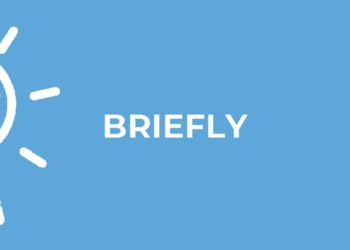
By Rowland Brown
Some may recall the challenging period Namibia faced from late 2015 through 2016. Growth went from four and five percents down to one and zero percents. The fiscal taps were dialled back, with real public expenditure falling for the five consecutive years, unemployment started to rise, household incomes to stagnate.
A number of parallels can be drawn between the 2015/16 period and the current situation developing in Namibia, and this should come as a stark cautionary tale, not least to the policy making class. Indeed, this period started the meteoric decline in popularity of the incumbent party, from a dominant 80% position, to a fragile 53% a short decade later.
The parallels start with household incomes. Much like in 2015, household incomes had become stretched. In part through debt, and in part through the end of a construction (and related employment) boom.
This boom was led by three mines being consecutively constructed, as well as government buildings, retail outlets and similar. Ten years later, the situation has deteriorated further.
Non-performing banking sector loans remain elevated, with one in every N$20 dollars of loan extended, not performing. In 2015 it was one in N$100. Unemployment has risen from around 30% (28% in 2014, 34% in 2016) to 55%. In short, in 2015 households were tapped out, unable to drive growth without a significant increase in employment or wage adjustments. In 2025, the situation is only worse.
A similar situation can be seen in public finances. In 2015, a five-year expenditure boom, driven largely by TIPEEG, was brought to an abrupt end as debt to GDP had jumped from 15% to close to 50% in just five years.
Public revenues were declining as the late-phase construction and related boom faded, and willingness to fund this deficit domestically faded with it. The fiscus had little choice but to cut spending, and walked an austerity (trade-off between economic growth and debt growth) tightrope for a number of years thereafter, with debt levels continuing to rise.
Today, debt levels are close to 65% of GDP. Deficits have shrunk, however both the most recent NDP, as well as the SWAPO Manifesto Implementation Plan, foresee huge additional expenditure – deficits are going to widen once more.
A decade ago, in order to compel the funding of the deficit from local savings, pension funds were required to increase their ownership of local assets from 35% to 45%. Today, these savings funds sit closer to 55% invested domestically. Going forward, raising the deficit domestically may prove challenging.
A positive sentiment and outlook will be key. At least bank liquidity is better this time around. From an alternative funding avenue perspective, foreign funding too may prove challenging. In 2015, Namibia was still clinging on to its investment grade rating. A decade later, we are speculative grade, three notches below investment grade. The overall fiscal situation in 2015 was worrying. Today, it is worse.
In 2015, Namibia faced fiscal and external account pressures as a result of export commodity prices falling. This was most notable in the uranium space, where the uranium price continued its post-Fukushima slide, eventually falling from well over U$100/lb to below U$20/lb. The impact on volumes as well as prices exported had a further negative impact on fiscal revenues, and dampened export earnings. Uranium was Namibia’s second largest commodity export. In 2025, diamond prices are at their lowest level in well over a decade, at about half the price of 2015.
Diamonds are our largest commodity export, and the diamond mining company, historically the single largest tax contributor, has seen a material decline in profitability and tax over recent years. Again, 2015 was worrying, but 2025 is no better.
As some will have noticed, these three factors represent three of the four components of GDP.
The final component is investment, and once again, strong parallels can be seen. In 2015 the new government embarked on a number of populist policies. Rent control, inheritance tax, the so called “investment promotion act” and the so called “equitable empowerment framework”.
These policies, while attractive in name and stated objective, have one and only one impact on capital allocation – it is allocated elsewhere. Whether this is the marginal dollar of profit made by Namibian businesses, the discretionary savings of Namibians or, perhaps, the foreign private savings that have been put to use to find and develop vastly influential mines to turn Namibian minerals into tax income and employment.
Investment is THE catalyst for economic growth and recovery, especially when households, businesses and government are already tapped out or close to tapped out, with little scope for endogenous growth.
The problem is that investment needs a friendly and predictable environment. Namibia has, prior to 2015, been celebrated for providing this, but the last decade has demonstrated a number of cracks through which doubt is starting to flow.
While no blatant anti-investment laws have yet been passed, noises and statements are starting to shake confidence, and a denting of confidence can have major implications for the raising of the deficit, as well as the growth and employment outlook.
Of course, Namibia has significant socioeconomic problems, and it’s understandable that a new leadership group wishes to try new approaches to improve the lives of Namibians. Moreover, it is important that we do not let a natural tendency to be change adverse drive us to conclude that all changes are for the worse.
However, populist policy that treats symptoms not causes, policy that materially disincentivises investment and similar, will come at a heavy socioeconomic cost. In this regard, it’s important to note that the status quo is anti-investment, with the sole sector seeing material net-fixed-capital growth being the mining sector.
This is driven by both onshore mining investment, and oil and gas exploration. Current noises on both fronts are worrying. Unrealistic local ownership demands, as well as general inertia, put future investment in this space at risk, which can quickly ripple through to negative sentiment on the country in general, not to mention additional fiscal pressure. The 2015/2016 pressures, and the economic and political implications of the same, should be a cautionary tale, not a blueprint for repeat.
* Rowland Brown is a Namibian Economist with a focus on financial economics. Born in and raised in Namibia, he studied in Scotland before returning to Namibia in 2010. After working for the National Planning Commission, the Capricorn Group, Bank of Namibia and IJG Securities, in 2017 he co-founded a diversified financial service company, Cirrus, with a focus on financial intermediation and market development. Eight years later, the group now employs over 140 people.
Since 2015 he has worked as a consulting expert on financial system stability for the IMF with a focus on East Africa. He was the founding chairperson of the Economic Association of Namibia and a graduate of the US State Department’s International Visitor Leadership Programme to the United States.His time is increasingly spent on corporate finance work as part of the corporate finance team at Cirrus, where the focus is on local capital market development.











